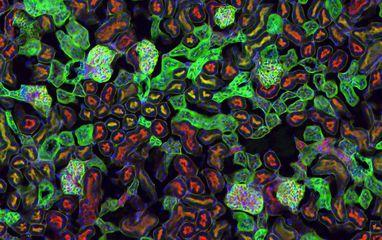
Tips for Choosing a Digital Pathology Image Analysis Solution
Image Analysis can be a powerful tool for researchers using digital pathology. We offer some top tips to consider when choosing your solution.
1. Consider Your Use Case

What applications do you want to use image analysis for? Consider your biomarkers, tissue types, and goals. Some examples include:
- Brightfield or fluorescence.
- Immunohistochemistry.
- In situ hybridization.
- Tumor / histology pattern recognition.
There is a wide range of image analysis tools on the market, so make sure you choose the correct ones.
2. Look for Flexible Analysis Options
Researchers frequently work with a changing array of biomarkers, tissues, and disease states. While there are technical limitations to image analysis, your tools should be flexible enough to meet a variety of needs.
- Will the algorithm analyze images in the file formats you use, or is it locked to a vendor-specific format?
- Can you customize the analysis algorithms for different stains, markers or tissues?
- Can custom algorithm parameters be saved and easily re-run as needed?
- Will the algorithm analyze whole slide images and / or regions of interest?
- Can you define your own scoring categories for the output data?
3. Demand Reproducible, Accessible Data
Image analysis is only useful if the results are consistent and trustworthy. Make sure that your selected analysis tool produces robust, reproducible results in user-friendly formats.
- Run the same parameters multiple times on the same area to confirm that the same results are returned.
- What formats do you see data in – numeric, graphical, visual image mark-up?
- Are results saved along with your images? Is there an image / data management solution associated with the image analysis product?
- Can they be easily exported (e.g. in CSV or XLS format) for analysis with statistical software packages?
4. Consider Automating Your Workflow
One advantage of image analysis is the ability to automate time-consuming manual tasks, such as ISH / FISH spot counting. Depending on the volume of slides you plan to analyze, it is also worth considering additional levels of automation to decrease the amount of time you spend interacting with your image analysis solution.
- Is the user interface easy to use? Can you quickly recall and apply saved algorithm settings?
- Can the algorithm queue up batches of whole slides / regions of interest for analysis, or does it analyze one at a time?
- Does the analysis run locally (workstation) or on a server? Server-side analysis will typically be more powerful, due to dedicated processing resources, but also costlier.
5. Manage Your Resources
If you are planning to deploy an image analysis solution for use by multiple colleagues, consider how these resources will be made available to everyone.
- Local (workstation) analysis solutions are typically only usable by one person at a time, while server-side or cloud solutions can be accessed by multiple users simultaneously.
- Can you selectively share your saved algorithm parameters and image analysis results with other users in the system?
- Are there any remote users who may need to access the system? Consult with your solution provider on how best to provide them with access.
- Does the image analysis solution have a built-in limit on the number of user accounts (licenses or user IDs)? Factor in the cost of additional licenses if more users are added to the system.
Leica Biosystems content is subject to the Leica Biosystems website terms of use, available at: Legal Notice. The content, including webinars, training presentations and related materials is intended to provide general information regarding particular subjects of interest to health care professionals and is not intended to be, and should not be construed as, medical, regulatory or legal advice. The views and opinions expressed in any third-party content reflect the personal views and opinions of the speaker(s)/author(s) and do not necessarily represent or reflect the views or opinions of Leica Biosystems, its employees or agents. Any links contained in the content which provides access to third party resources or content is provided for convenience only.
For the use of any product, the applicable product documentation, including information guides, inserts and operation manuals should be consulted.
Copyright © 2024 Leica Biosystems division of Leica Microsystems, Inc. and its Leica Biosystems affiliates. All rights reserved. LEICA and the Leica Logo are registered trademarks of Leica Microsystems IR GmbH.